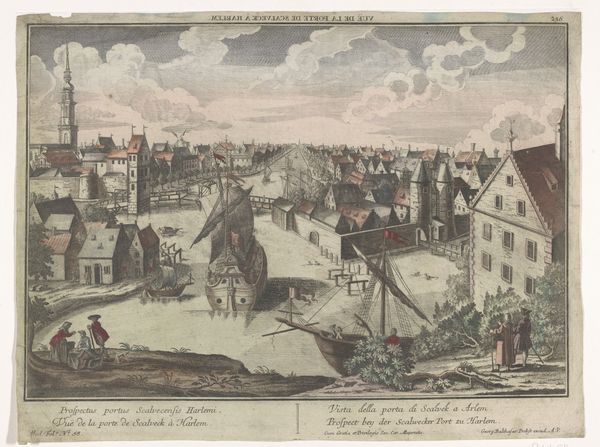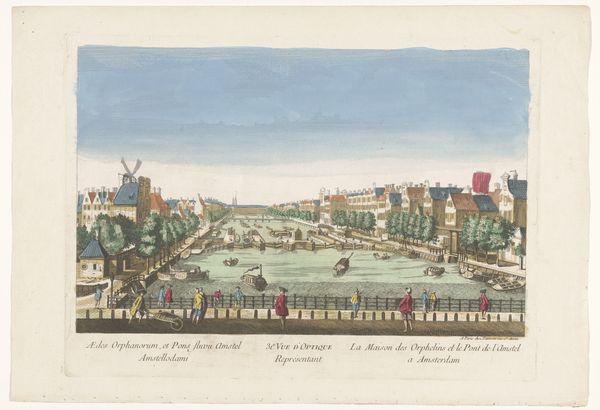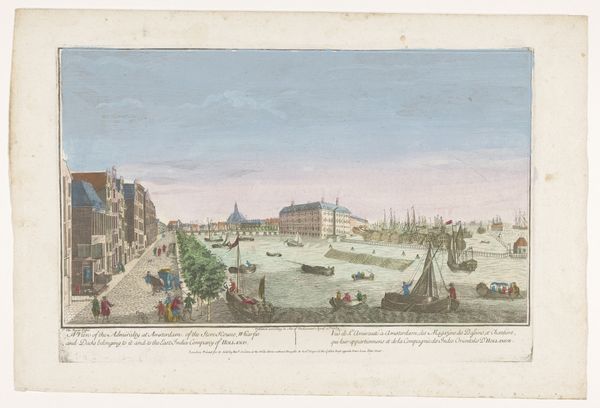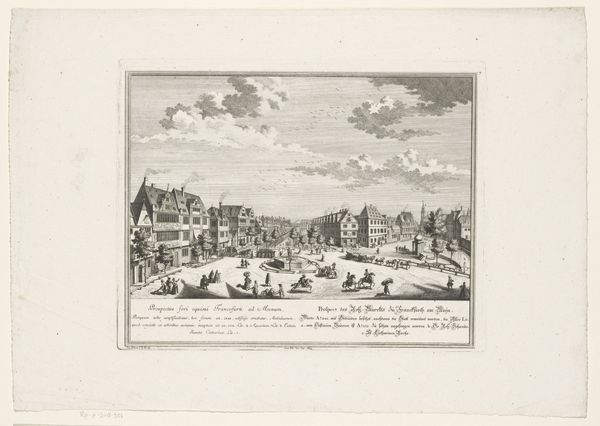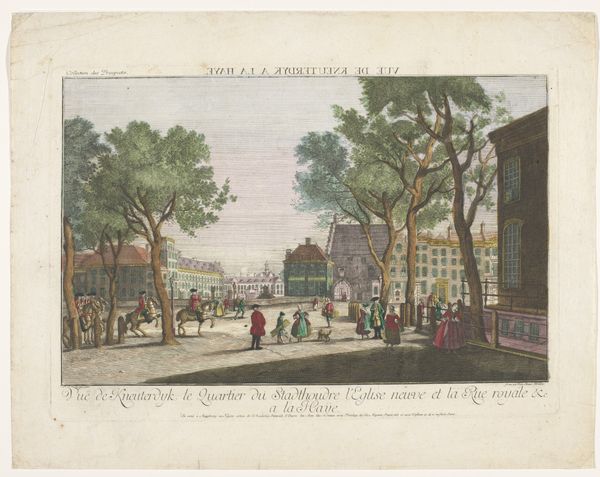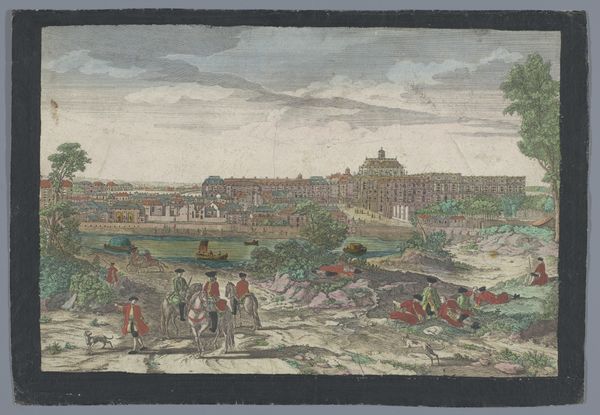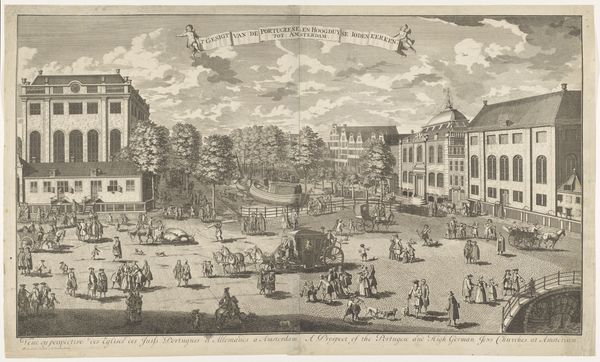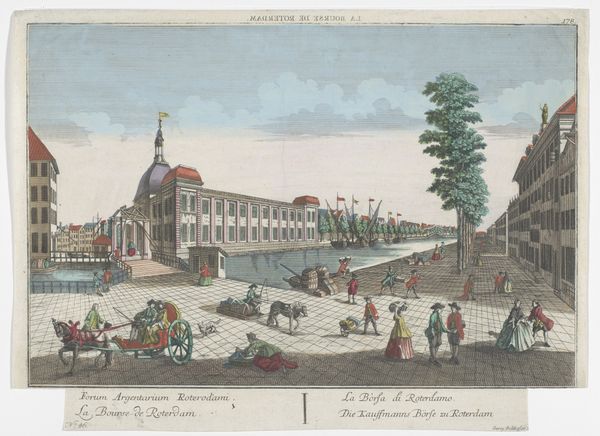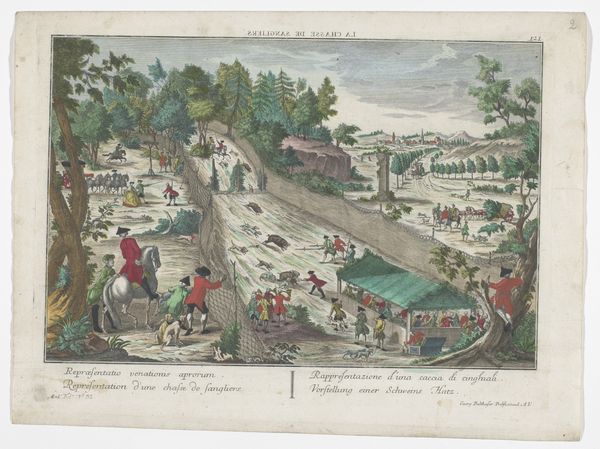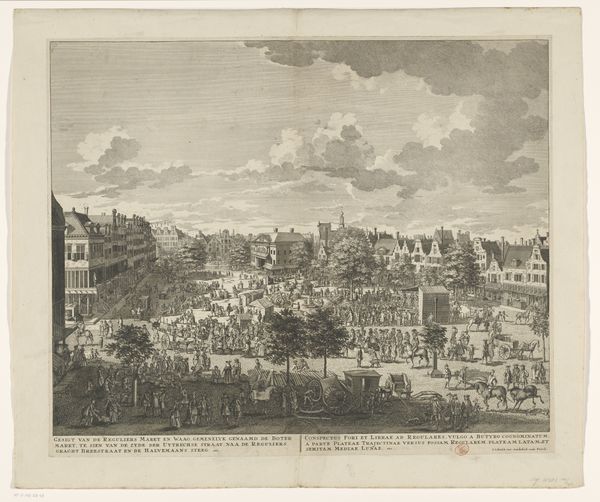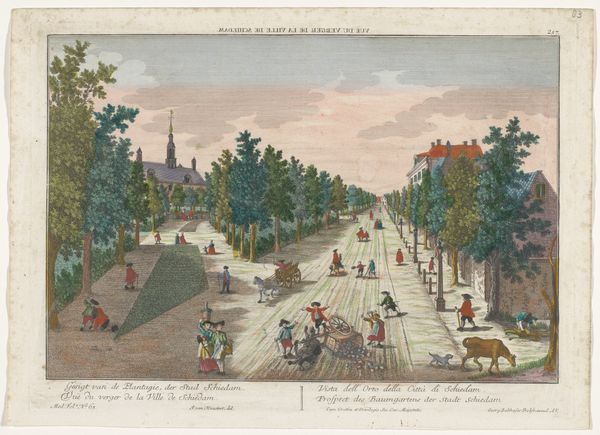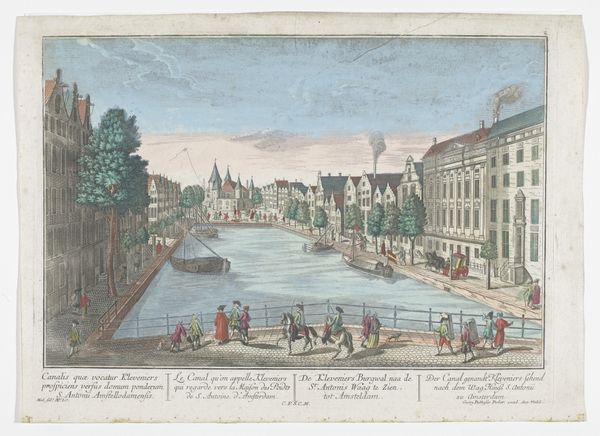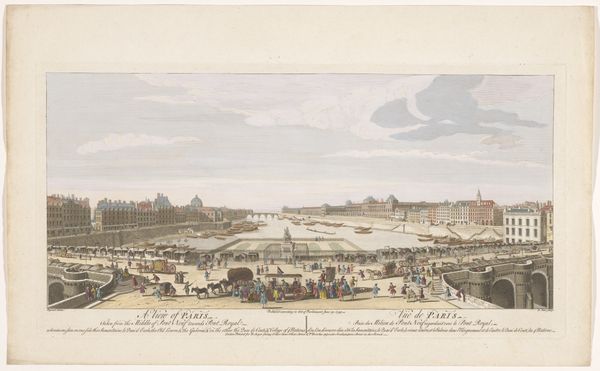
print, watercolor
#
baroque
# print
#
landscape
#
watercolor
#
cityscape
#
watercolour illustration
#
genre-painting
#
watercolor
Dimensions: height 287 mm, width 462 mm
Copyright: Rijks Museum: Open Domain
Curator: Before us is a print titled "Gezicht op de Rossmarkt te Frankfurt am Main," or "View of the Horse Market in Frankfurt am Main," created sometime between 1745 and 1775. Jean-François Daumont is credited with its creation, and it now resides in the Rijksmuseum collection. Editor: My immediate reaction is a sense of bustling commerce, meticulously rendered. The scale feels both intimate, like a genre scene, yet also grand, encompassing a significant slice of city life. What stands out to you regarding Daumont's materials and approach? Curator: Well, it's fascinating how the watercolor is used. Its transparency emphasizes the layering process Daumont would have undertaken. Note the light washes, the controlled line work which allows him to build depth. I wonder what specific papers and pigments would have been accessible and favored by printmakers at the time. This level of material awareness is key to comprehending his artistic practice, and perhaps, the marketplace. Editor: Indeed. The choice to depict the Rossmarkt, the Horse Market, holds symbolic significance. Horses historically represented power, wealth, and status. And consider the fountain! In many cultures, fountains represent life-giving resources and civic pride. How might the positioning of that fountain within the composition underscore its significance? Curator: Symbolism aside, I'm drawn to the pragmatics of a horse market! The economy that fueled this artistic endeavor also underpinned Frankfurt. The figures are placed with deliberation so that you know people moved along predetermined routes dictated by commercial necessity. Notice also the puffs of smoke from distant manufactories, pointing to urbanisation Editor: Absolutely. The smoke is a brilliant visual shorthand. But returning to symbolism for a moment: beyond pure commerce, the print captures a transient moment in the theater of human interactions – negotiations, social exchanges, aspirations all intertwined in this singular location. Curator: You are highlighting how genre and materiality interlace: the quality of lines describing dress vs the quality of line demarcating urban space: both speak to class difference, availability of product, both intersect at this physical place and time. Editor: Looking closely allows one to decipher not only the city, but what underpinned it, its values, priorities, and ways of life! Curator: It provides a glimpse into a society on the cusp of profound shifts, capturing the tangible markers of economic progress interwoven with enduring cultural symbols. It enriches how we can think about art history.
Comments
No comments
Be the first to comment and join the conversation on the ultimate creative platform.

